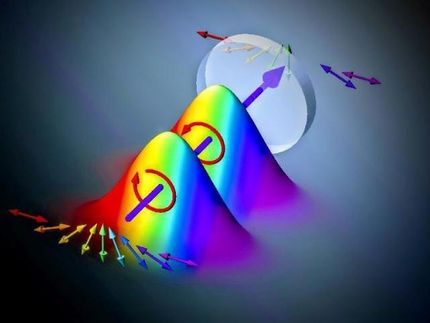Schrödinger cats snatch many-particle quantum states
Scientists from University of Marburg and JILA (University of Colorado and NIST) establish a high-precision framework for laser spectroscopy to directly accesses quantum properties of matter.
Quantum mechanics describes the complete information of any given system. Even though nanotechnology has developed tremendously during the last decades, one can currently access the full quantum information only when systems are extremely simple such as single light modes or single atoms. This limitation is about to be removed due to the recent developments reported in Nature Physics. This research introduces a completely new framework by adding quantum aspects into generic laser spectroscopy.
Over the years, the evolution of lasers has followed a clear path where the control over their spectrum, intensity, and phase has been continuously improved. These classical aspects are already mastered with astounding accuracy; for example, the universal standards for time and length are based on the high-precision laser spectroscopy. However, light contains also a quantum extension that must be conquered next. The field of quantum optics is pioneering the development toward this direction. Until now, it has seemed inconceivable to investigate quantum-optical properties of many-particle systems simply because of the overwhelming mathematical complexity and technical challenges. Therefore, the quantum-optical aspects of many-particle physics are still largely unexplored, which clearly hinders major advancements in many fields with nanotechnology aspirations.
Toward new quantum-spectroscopy framework
The Marburg-JILA collaboration has approached this monumental dilemma from a completely new point of view by demonstrating that the quantum-laser spectroscopy can be realized by using the very same approaches as those applied in any high-precision laser spectroscopy. Mackillo Kira explains: “As the first step, one simply collects a massive set of measurement data as function of classical laser’s intensity and phase. Astonishingly, we found a way to mathematically project all possible quantum-optical measurements, even though this information is highly convolved.” Steven Cundiff adds: “We have essentially combined best of both worlds concerning high-precision measurements and quantum theory to robustly project quantum-optical data.” To demonstrate the new framework of quantum spectroscopy, this research team analyzed how light absorption in semiconductors – with roughly one million particles – was influenced by quantum fluctuations of light.
Already 1935, Erwin Schrödinger introduced a cat state as a superposition of dead and alive states to elucidate the essence of interference effects, responsible for many nonintuitive effects such as teleportation and quantum computing. One can approach an analogous situation less drastically by considering a quantum-laser source in superposition of two extreme states. Ryan Smith stresses: “Our results show that Schrödinger-cat-state lasers directly access targeted many-particle states with extraordinary accuracy. In particular, we could single out both molecule and electron-cluster states from the interacting semiconductor, just by adjusting the quantum-interference properties of the Schrödinger cat states used.” Stephan Koch concludes: “This means we have solved how generic quantum-optics investigations can be performed in practice.”
Future of quantum spectroscopy
Already the ordinary laser spectroscopy is one of the most powerful methods in metrology, physics, chemistry, and biology to characterize nanoscale processes of very different systems. Steven Cundiff comments: “Our work simply generalizes the laser spectroscopy to a completely new level by making quantum spectroscopy possible with minor modifications to present-day laser spectroscopies.” Mackillo Kira summarizes: “Since the developed framework opens an unprecedented access to complicated nanoscale processes – previously considered inconceivable – our results can revolutionize the way laser spectroscopy will be applied in the future.”
Research team
The theory part of this collaborative work was conducted in Marburg by Profs. Mackillo Kira and Stephan W. Koch and the experiments were performed in JILA by Dr. Ryan Smith, Andrew Hunter, and Prof. Steven Cundiff.
Original publication
Other news from the department science
Most read news
More news from our other portals
See the theme worlds for related content
Topic World Spectroscopy
Investigation with spectroscopy gives us unique insights into the composition and structure of materials. From UV-Vis spectroscopy to infrared and Raman spectroscopy to fluorescence and atomic absorption spectroscopy, spectroscopy offers us a wide range of analytical techniques to precisely characterize substances. Immerse yourself in the fascinating world of spectroscopy!

Topic World Spectroscopy
Investigation with spectroscopy gives us unique insights into the composition and structure of materials. From UV-Vis spectroscopy to infrared and Raman spectroscopy to fluorescence and atomic absorption spectroscopy, spectroscopy offers us a wide range of analytical techniques to precisely characterize substances. Immerse yourself in the fascinating world of spectroscopy!





























































